
Remote Philippines customized tour in search of the NEW Ninox Owls. 11 November – 28 November.
Leader: Bram Demeulemeester
Participants: Ashley Banwell & Carlton Collier
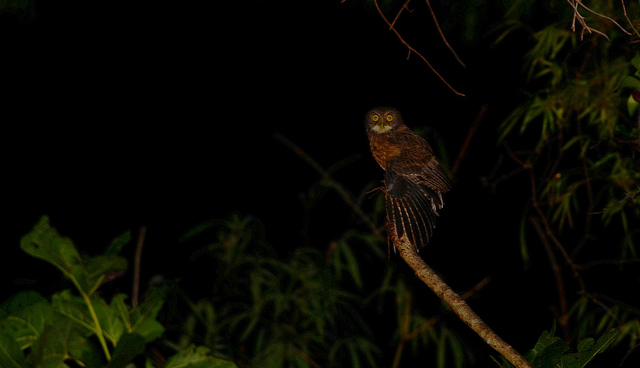
Cebu Hawk-Owl
We started our tour with a very early departure from Manila airport with a flight bound for Cebu, where we transferred directly to the Tabunan forest for a one night stay. Soon we were out in the field searching for the critical endangered Black Shama which showed very well. We also recorded Visayan Balicassiao, White-vented Whistler, Mangrove Blue Flycatcher (a sure future split) Crimson Sunbird. At dusk we were ready to search for our main target bird, the recently described Cebu Hawk-Owl. We were able to have prolonged views of our first new Hawk-Owl on this tour in seach of the NEW Hawk Owls complex. Before we had to leave to the airport in Cebu city we had the chance to visit one of the platforms on the limestone hills at Tabunan forest where we had several views of the Streak-breasted Bulbul, another possible split (Cebu Bulbul). A midday flight took us to Cagayan De Oro for one night overstay at Malabalay, where we stocked up our supplies for a 3 days stay at Mt. Dulang Dulang.
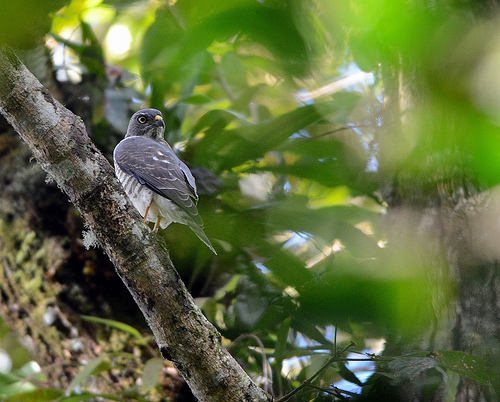
Besra
The next day early morning we were on our way to Sonco where we started the trek to Mt. Dulang Dulang campsite, our home for the next three days. Inside the forest, Apo Sunbird showed well before reaching the camp. Despite the weather conditions during some periods of our stay, prolonged rain and wind, we had one sunny day and plenty of Mindanao’s Montana birds where seen during our visit. Besra was seen well twice. Amethyst Brown-Dove preformed for a long time eating fruits and Mindanao Montane Racquet-tail was seen clinging on vines. Blue-capped Kingfisher was heard commonly at dawn and seen twice, while several shy Mindanao Hornbills where passing through the forest and were spotted in the canopy. We encountered several bird flocks holding many of the specialized endemics like McGregor’s Cuckoo-shrike, Black-and-cinnamon Fantail, Yellow-bellied Whistler, Apo Sunbird, Mountain White-eye, Black-masked White-eye and Cinnamon Ibon, White-cheeked Bullfinch was seen just once. White-browed Shortwings where heard commonly, Mindanao Long-tailed Ground-Warbler was heard several times and we had brief views once. Snowy-browed Flycatcher and Apo Myna were also seen. Night Birds remained very elusive in the Montana forest, Giant Scops Owl and Everett’s Scops-Owl remained heard only birds. The extremely rare Mindanao Scops-Owl was heard only and remained very elusive. After my third visit to Mt. Dulang Dulang I still recommend it as one of the best sites to look for Mindanao’s Montana birds. A visit in March or April is recommended.
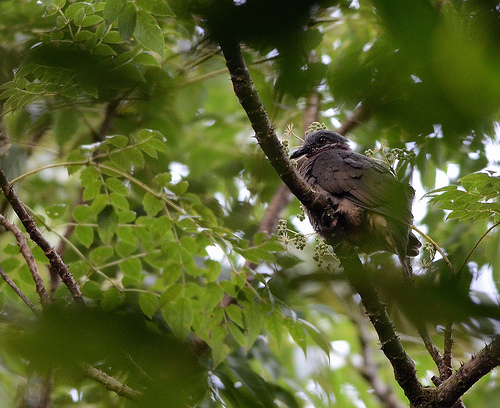
Amethyst Brown-Dove
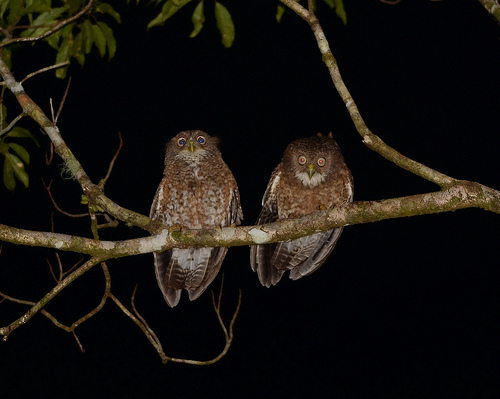
Camiguin Hawk-Owl
On our last day we made our way back to Sonco, our transport was waiting for the journey to Camiguin Sur island where we arrived in the afternoon. We prepared ourselves again for a night bird session in search of another New Hawk Owl. Soon we were on the road to have our first glimpses of the Camiguin Hawk-Owl, that was only described recently. The following morning we were back on the same road and searching of more of Caminguin Sur little know birds. Several Camiguin Sur Bulbuls (Split from Yellow-Bellied) where seen, Winchell's Kingfisher was heard several times and seen well. Rufous Paradise Flycatcher, Purple-throated Sunbird and the distinct looking form of Black-naped Monarch where all seen very well. We also visited Ardent Resort we spotted Variable Kingfisher and Mangrove Blue Flycatcher, both are probable future splits. We had several more visits at dusk and dawn to get better views of the Camiguin Hawk-Owl. Camiguin Isand is a very pleasant pace to visit, especially with the New Hawk Owl, Hanging-parrot and several other potential splits it is worth considering a visit on your Philippines birding trip. We left Camiguin Island and made our way back to Cagayan De Oro for our evening flight bound for Manila.
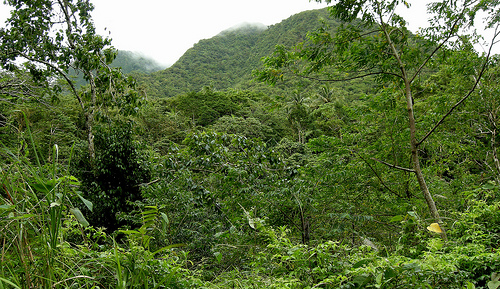
Camiguin Sur Island forest
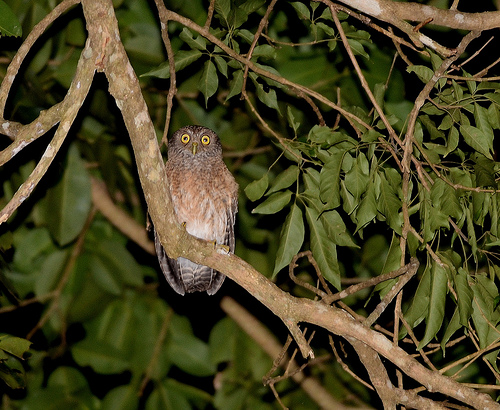
Romblon Hawk-Owl
The following morning we were on our way to Batangas to catch the ferry to Tablas. With a few hours spare we called in to Mt.Makiling where we saw a few goodies like Spotted Wood-Kingfisher, Scale-feathered Malkoha and White-browed Shama . A night ferry took as to the Island of Tablas in Romblon where we arrived very early and transferred to the quiet town of St. Agustin. This would be our base for exploring the Dubduban watershed the following days. Soon we were out in the field. A steep trail took us to the beautiful forest of the watershed and we quickly spotted Tablas Drongo, at least 3 bird where seen. The localized Steak-breasted Bulbul (Tablas Bulbul) sure a future split, showed well after some searching. Or main target bird here was Romblon Hawk-Owl, recently given full species status. The new Hawk-Owl was seen very well and we also had prolonged views of Mantanani Scops-Owl. Tablas is a fantastic Island and holds some great and seldom seen endemics, it is well worth a visit. We took a flight back to Manila and transferred immediately to Villa Escudero for one night stay. The Villa is a resort surrounded with plantations and native trees and is a good stake-out for Indigo-banded Kingfisher , our main target bird here. We made our way to the river and had long views of this endemic Kingfisher. A day-roost Philippines Scops-Owl was shown to us by our local guide and also gave good views at night. A wintering Northern Boobook was heard calling that night. Next morning we had more stunning views of the Indigo-banded Kingfisher before making our way to the Angono caves in Rizal. At this site we had great views of the famous Philippine Eagle-Owl.
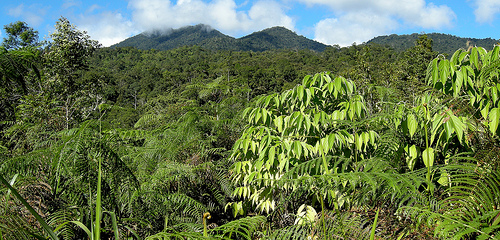
Mt.Talomo above Eden resort
After a night in Manila we left very early for the airport and our flight to southern Mindanao. At Davao airport we were met by our friend Pete Simpson, a British birder now living in the city. Pete took us to a recently discovered site on the slopes of Mt. Talomo to search of our most wanted bird, Whiskered Flowerpecker. As Pete knows the area well it took little more than an hour from leaving the airport to get cracking views of this very localized endemic Flowerpecker, a must for every birder visiting Davao.
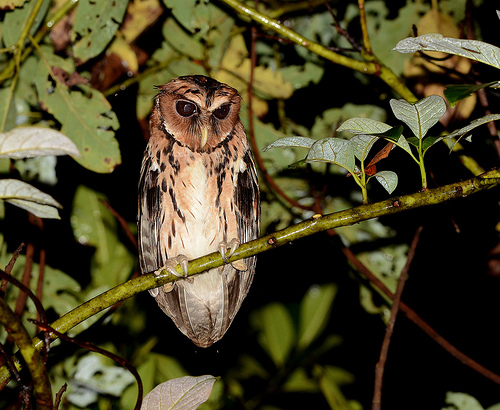
Giant Scops-Owl
We travelled from Davao to Bislig, our base for two days birding in P.I.C.O.P. Our first early morning start proved to be very successful for night birds when Giant Scops-Owl flew in and perched for a long time so we could have closer looks at this striking Owl species. This was followed by Mindanao Hawk-Owl and stunning views of Philippine Frogmouth. Daylight arrived and we recorded Rufous Hornbills and a group of at least 5 Writhed Hornbills was seen. Blue-crowned Racquet-tails and a scoping view of a Guaiabero were also welcome before we entered the forests and birded along trails and roads for the whole day. Surely the best bird of our stay here was the Mindanao Bleeding-heart that surprised us by flying from the ground into a tree and perched for several seconds and allowing us great views of this rarely encountered bird. One Steere’s Honeybuzzard was seen in an open area. Several Philippine Drongo Cuckoo where spotted, Spot-throated Flameback, one Azure-breasted Pitta, a few Philippine Needletails, Philippine Trogon, Winchell's Kingfisher and one other surprise was a Ruddy Kingfisher. Two Mindanao Wattled Broadbills showed very well for us while Streaked Ground-Babbler and Black-headed Tailorbird showed their skulking talents. Blue Fantails and several amazing looking Short-crested Monarchs showed up in few of the bird flocks along with Mindanao Rufous Paradise-Flycatcher and Naked-faced Spiderhunter perched several times. We ended our first successful day with crippling views of Everett’s Scops-Owl.

Everett’s Scops-Owl
The following morning we were early on route again to search for our Chocolate Boobook that showed up at first dawn. Soon we made our way to the last bigger remaining forest patch of the almost completely destroyed old logging concession area. Our main target of the day would be the amazing looking Celestial Monarch that appeared after several hours searching. A pair of roosting Philippine Nightjars, Black-chinned Fruit-Dove, Black-and-white Triller, Philippine Leafbird, Rufous-tailed Jungle Flycatcher, Mindanao Pygmy Babbler and Rusty-crowned Babbler where all seen. One other surprise during our visit was the sight of a Philippine Eagle that flew over and was also heard calling from a distance. The eastern Lowland forest of Mindanao is the richest birding area in the Philippines and is disappearing very fast with now only few patches left within the old P.I.C.O.P logging concession area. Our short visit still proved to be still very successful with most specialties seen in just two days. This is the only birding site from this tour that we also visit on our MAIN TOUR.
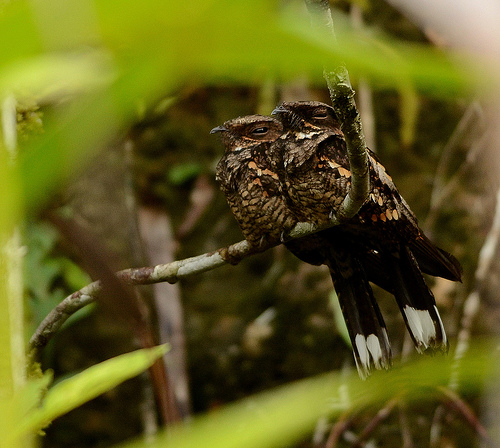
Roosting Philippine Nightjars at P.I.C.O.P
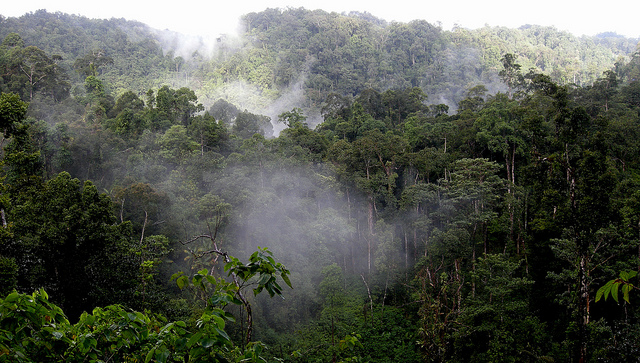
Forest view at P.I.C.O.P
Read more about the NEW: Philippine Hawk Owl complex.
